The demand for electric vehicles has risen sharply this year, likely driven in part by soaring petrol prices. Up to September 2022, 26,356 EVs were sold in Australia, making up 3.39% of all new cars – a 65% increase from EV’s market share of 2% in 2021, according to the Electric Vehicle Council’s State of EVs report published Friday.
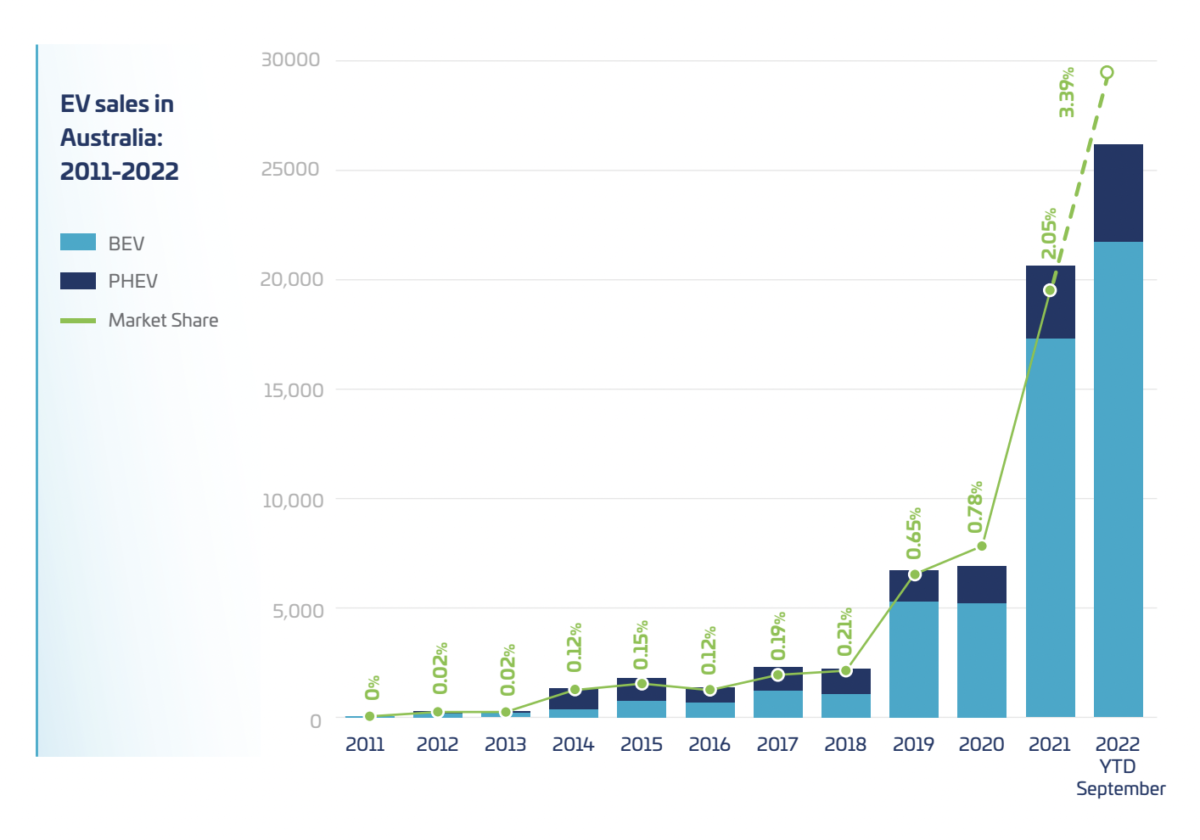
Image: Electric Vehicle Council
In the Australian Capital Territory (ACT), the percentage of EV sales among new cars rose to 9.5% – a figure surely set increase given the ACT’s recent announcement it would end the sale of new petrol and diesel cars by 2035, bringing it into closer alignment with policies in Europe and North America.
Australia’s EV supply
The primary barrier to EV adoption remains a lack of vehicle supply, said the EV Council, which is calling for a “strong and serious national EV strategy.”
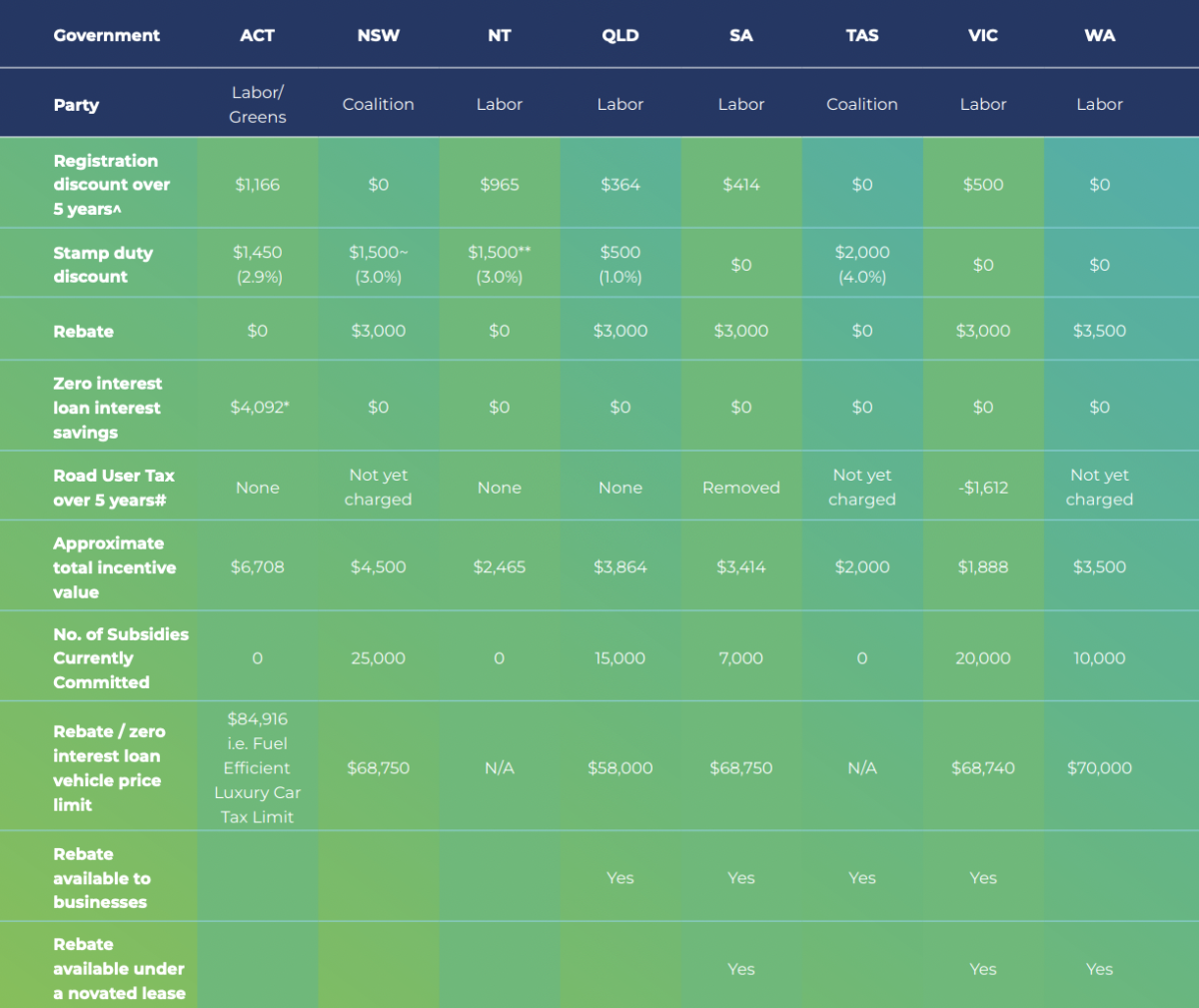
Image: Electric Vehicle Council
In terms of the models available to Australians, the country had a total of just 45, with 95 variants. Most of the models, 60%, are battery electric vehicles (BEV), with 35% plug-in hybrid electric vehicles (PHEV). There were 18 models of both electric trucks and utility vehicles, as well as 18 electric buses available.
Australia’s top brands
The Tesla brand dominated with its Model 3 accounting for 33% of all sales. Tesla’s Model Y took out the second spot in the ‘top five models’, followed by MG, Hyundai and Polestar.
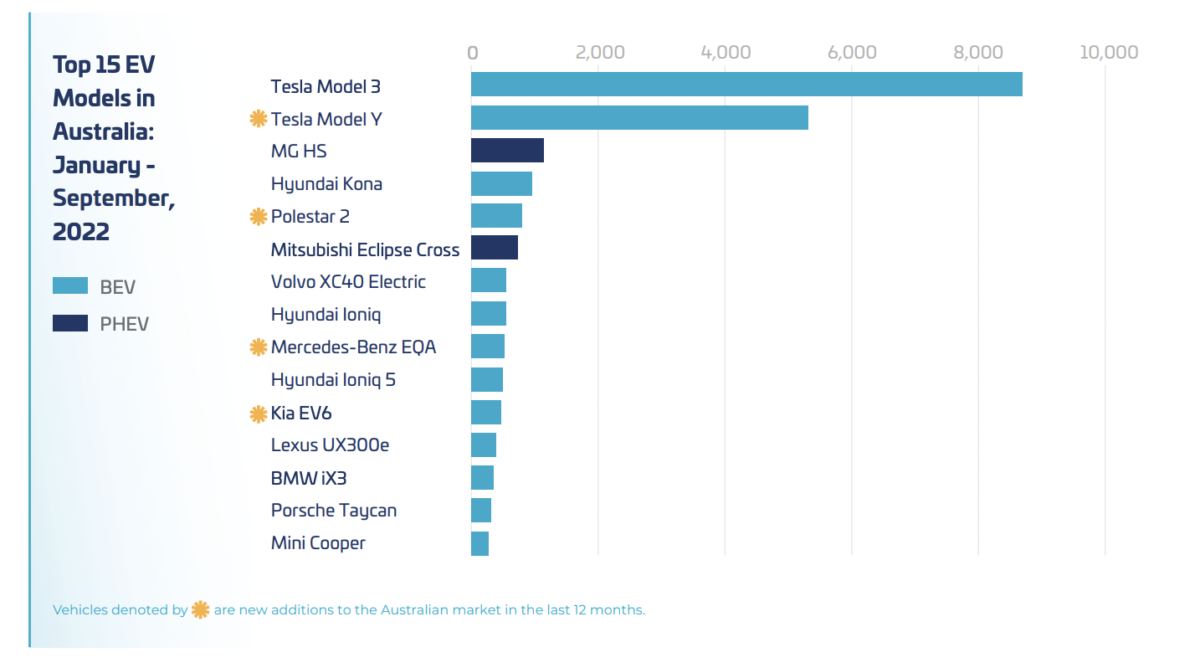
Charging access
Australia now has 3,669 public chargers across 2,147 locations. Of those, 274 were fast charger locations and 82 are classed as ‘ultra-fast charging’. (For reference, regular charging is up to 24 kW of AC/DC, fast charging is classed as between 24 – 99 kW DC, and ultra-fast is 100 kW+ DC).
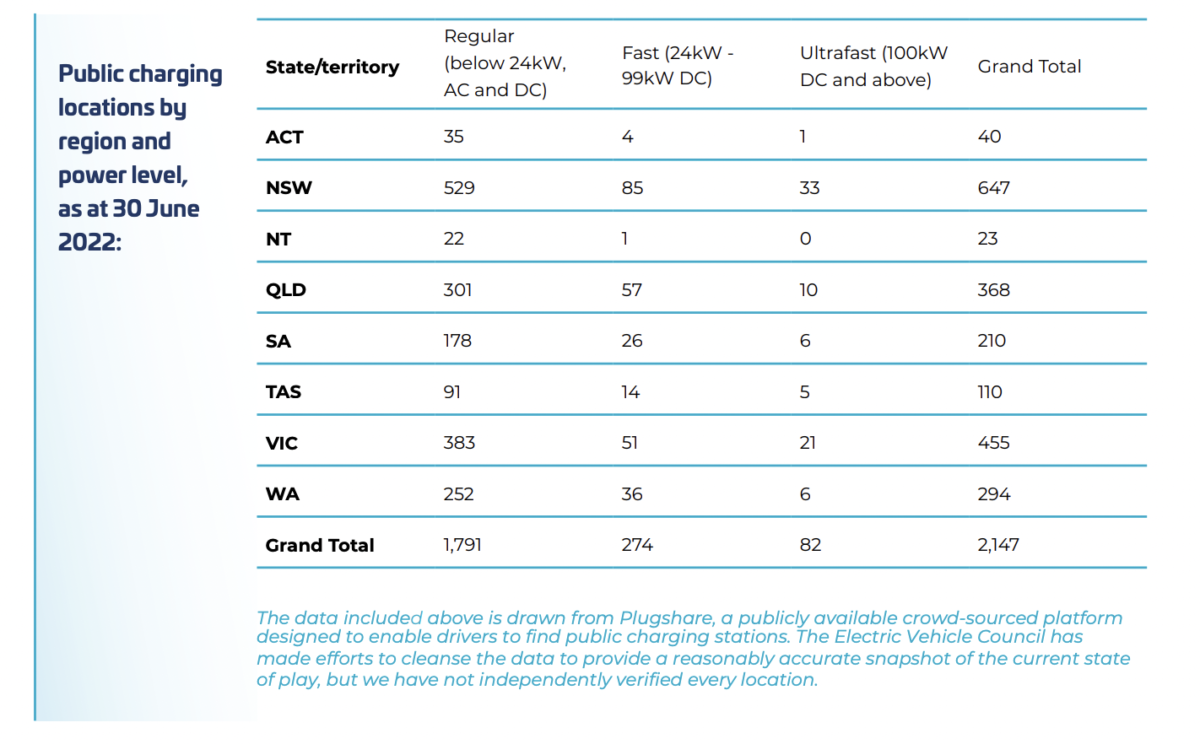
Government policies
The report includes a lengthy breakdown of policy areas surrounding EVs, looking at incentives, regulation, charging infrastructure, user road charges, and more across all the state governments.
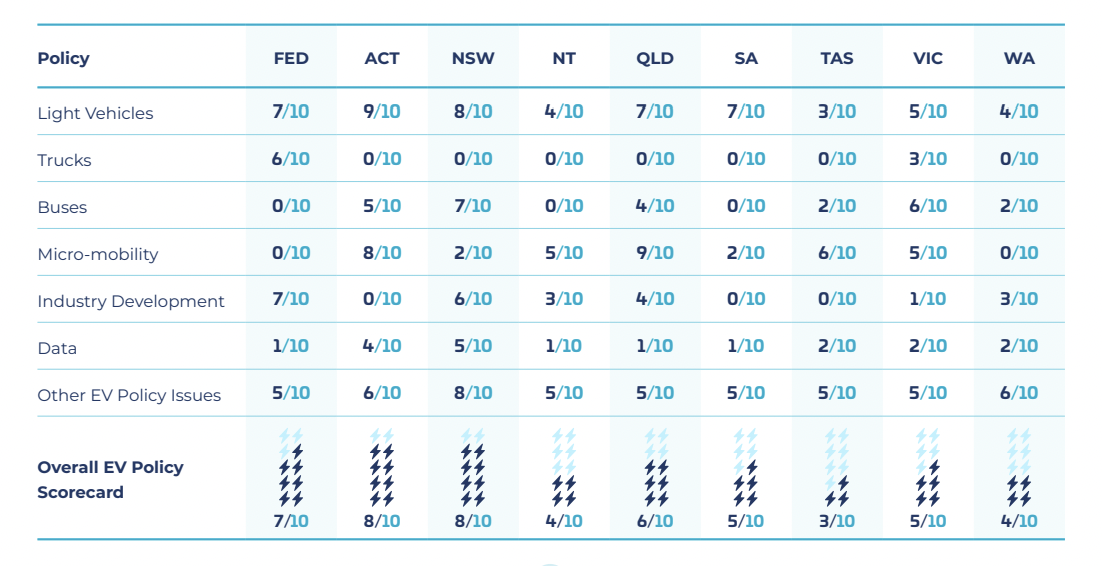
New South Wales and the Capital Territory shared the top spot, scoring 8/10. They were followed by the federal government, on 7/10, Queensland (6/10); Victoria (5/10); SA, NT and WA (4/10), and Tasmania (3/10).
EVs still no silver bullet
While the shift to electric vehicles will no doubt play a role in Australia’s decarbonisation, the proposition of switching internal combustion cars for EVs without any further behaviour change surrounding transport remains highly questionable.
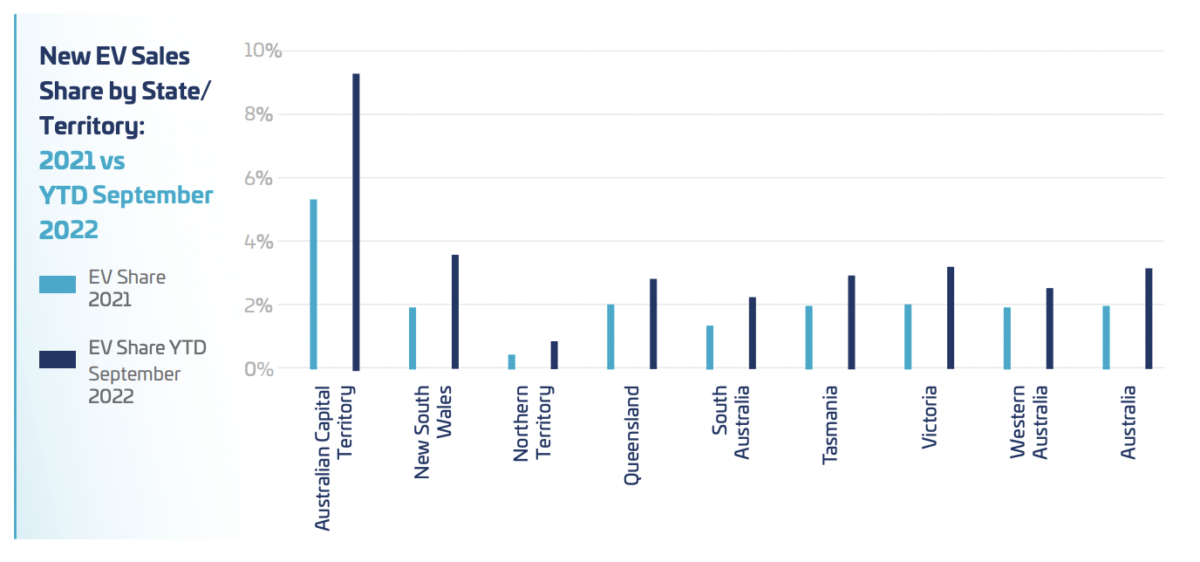
EV battery production is an energy-intensive process, as is car manufacturing as a whole. “Producing electric vehicles leads to significantly more emissions than producing petrol cars. Depending on the country of production, that’s between 30% to 40% extra in production emissions, which is mostly from the battery production,” fellow at the Cambridge Centre for Environment, Energy and Natural Resource Governance, Florian Knobloch, told CNBC in 2021.
Though these high emissions in initial manufacturing are offset by EVs lowered emissions during the car’s lifespan, reducing overall personal car use and opting for public transport and cycling remain far more sustainable transport options.
This content is protected by copyright and may not be reused. If you want to cooperate with us and would like to reuse some of our content, please contact: editors@pv-magazine.com.
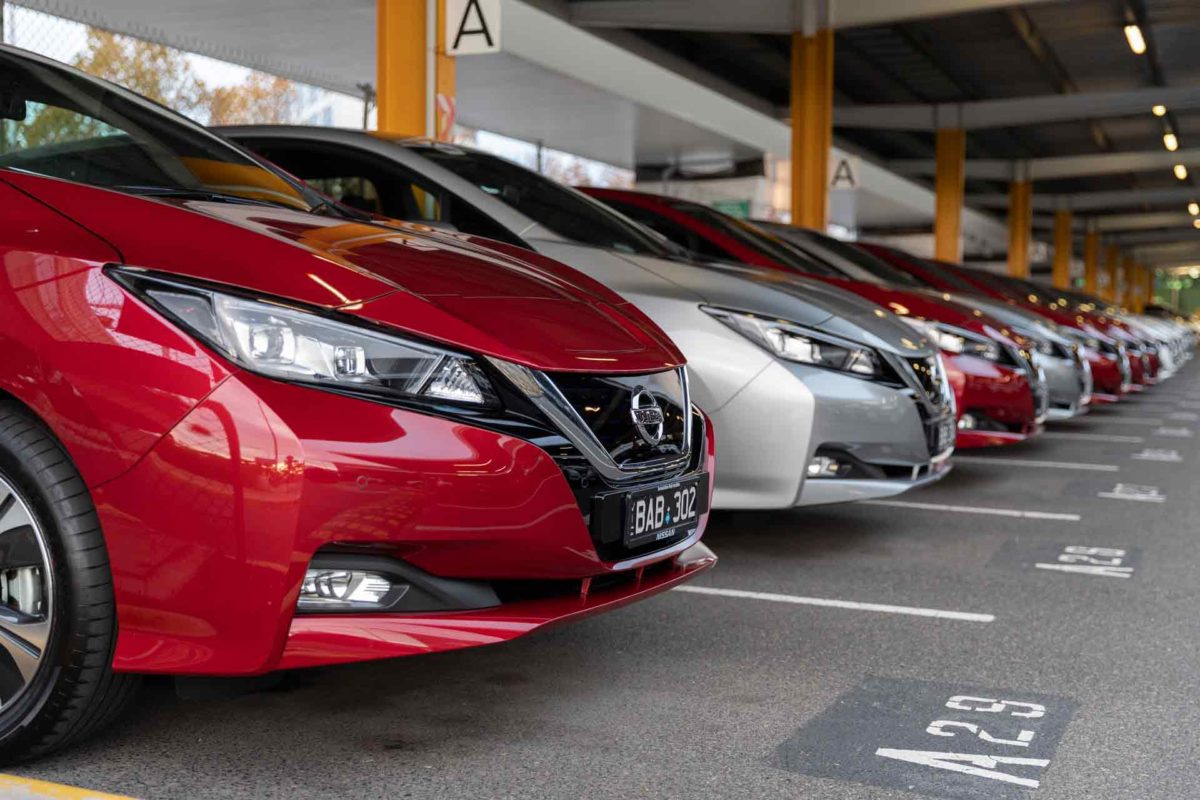








3 comments
By submitting this form you agree to pv magazine using your data for the purposes of publishing your comment.
Your personal data will only be disclosed or otherwise transmitted to third parties for the purposes of spam filtering or if this is necessary for technical maintenance of the website. Any other transfer to third parties will not take place unless this is justified on the basis of applicable data protection regulations or if pv magazine is legally obliged to do so.
You may revoke this consent at any time with effect for the future, in which case your personal data will be deleted immediately. Otherwise, your data will be deleted if pv magazine has processed your request or the purpose of data storage is fulfilled.
Further information on data privacy can be found in our Data Protection Policy.